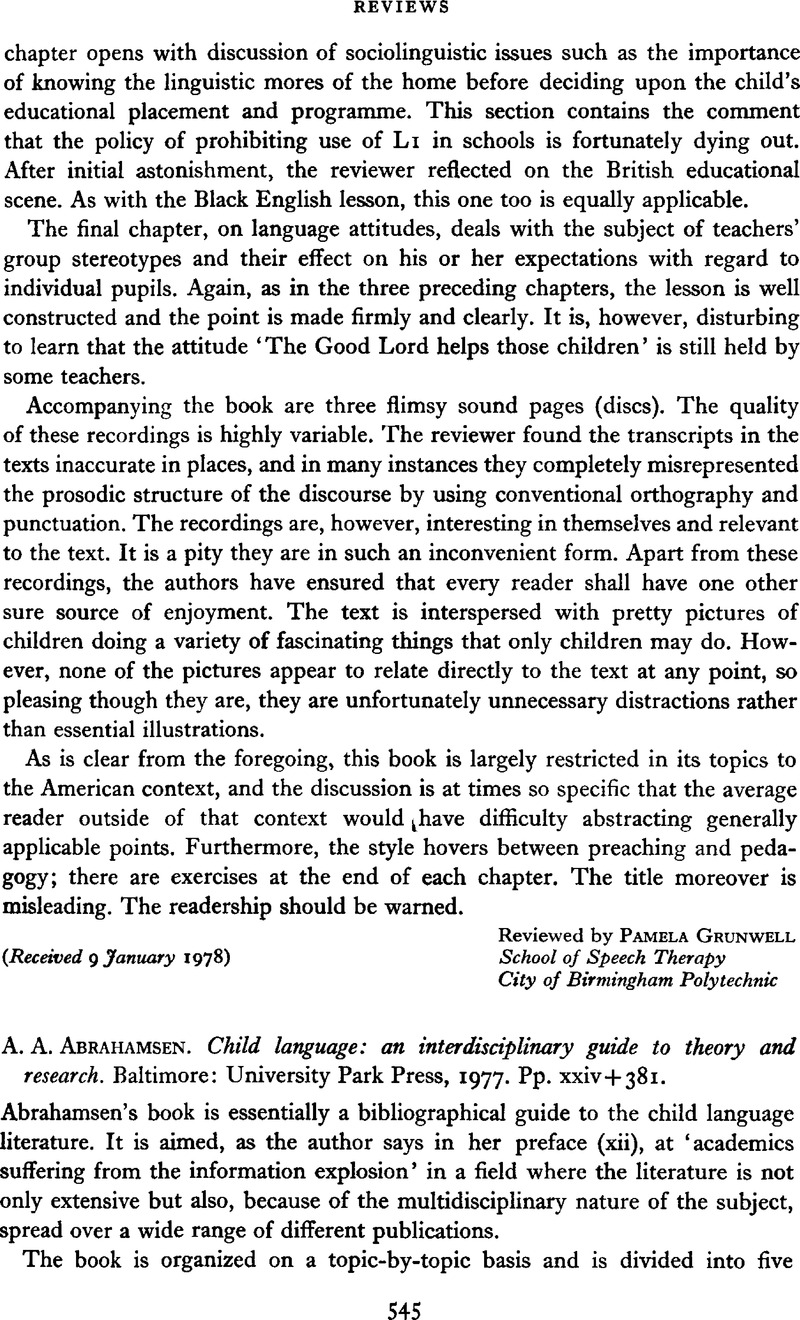No CrossRef data available.
Article contents
Published online by Cambridge University Press: 26 September 2008
Abstract
An abstract is not available for this content so a preview has been provided. Please use the Get access link above for information on how to access this content.

- Type
- Reviews
- Information
- Copyright
- Copyright © Cambridge University Press 1978
References
REFERENCES
Crystal, D., Fletcher, P. & Garman, M. (1976). The grammatical analysis of language disability: a procedure for assessment and remediation. London: Edward Arnold.Google Scholar
Fillmore, C. J. (1968). The case for case. In Bach, E. & Harms, R. T. (eds), Universals in linguistic theory. New York: Holt, Rinehart & Winston.Google Scholar
Francis, H. (1975). Language in childhood: form and function in language learning. London: Elek.Google Scholar
Geschwind, N. (1970). The organization of language and the brain. Science 170. 940–4.CrossRefGoogle ScholarPubMed
Halliday, M. A. K. (1967–1968). Notes on transitivity and theme in English. JL 3. 37–81, 199–244.CrossRefGoogle Scholar
Halliday, M. A. K. (1967–1968). Notes on transitivity and theme in English. JL 4. 179–215.CrossRefGoogle Scholar


